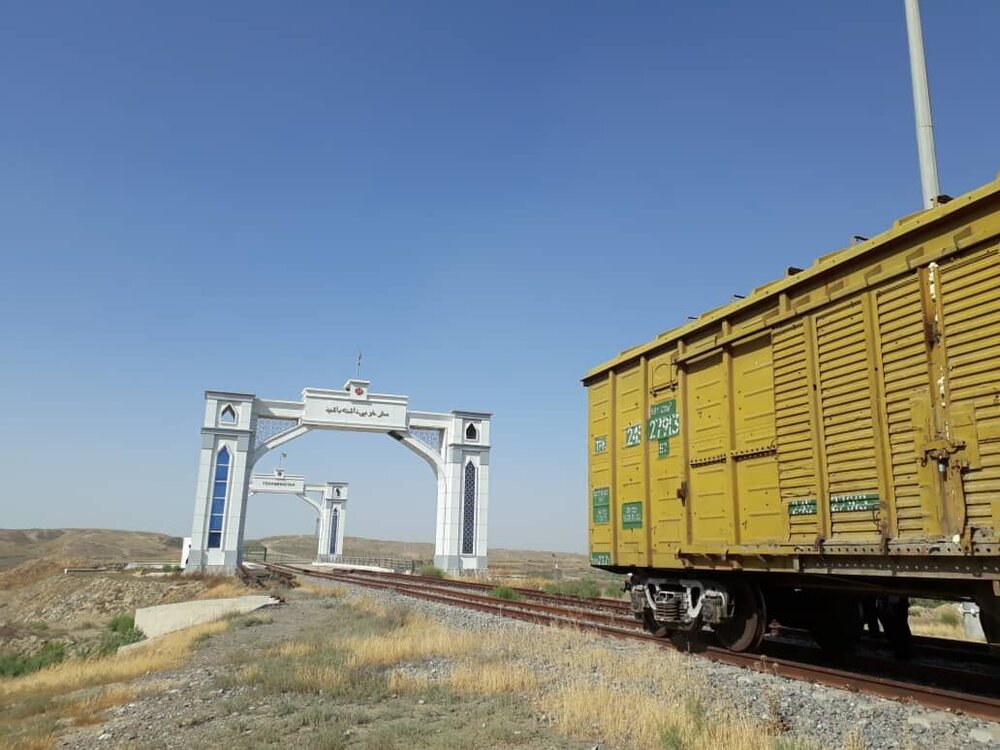Incheboroun railway crossing with Turkmenistan reopens

TEHRAN- Iran’s Incheboroun railway border crossing with Turkmenistan was reopened after four months on Tuesday evening as a cargo train carrying 30 wagons of cement consignment for export to Turkmenistan left Iran, the spokesman of Islamic Republic of Iran Customs Administration (IRICA) announced.
Rouhollah Latifi said that it was the third border crossing reopened between the two countries after the long time closure, Mehr news agency reported.
The IRICA spokesman also announced that 101 more wagons are waiting to export products to Turkmenistan, Kazakhstan, and Uzbekistan through Incheboroun railway border crossing.
Garmsar–Incheboron railway, with a length of 495 kilometers, links Garmsar in the north-central province of Semnan to Incheboron in the northeastern province of Golestan. It extends to Turkmenistan and Kazakhstan and links Central Asia to the Persian Gulf and beyond.
Latifi further said that Iran has exported products carried by 120 wagons to Turkmenistan via Sarakhs border crossing since last Thursday.
Reopening borders a result of mutual commitment
Iranian Transport and Urban Development Minister Mohammad Eslami said that reopening the border for trade between Iran and Turkmenistan was the result of mutual commitment, Fars news agency reported.
He underlined that reliability and mutual commitments have played a key role in the reopening of Iran-Turkmenistan shared border.
"With the implementation of hygienic rules, commitment, and regulations during coronavirus pandemic, some of the borders were reopened," Eslami said.
He said that Iran has reopened its borders with Turkey, Pakistan, and Turkmenistan, and trading activities have been resumed.
He reiterated that reliability has been the main reason for Iran-Turkmenistan border reopening.
In a relevant development earlier in June, Eslami said that Tehran has always sought to strengthen relations with Ashgabat by removing barriers, adding that a new chapter in relations between the two countries has begun after making progress in implementation of joint projects.
“The new Sarakhs Bridge was built based on previous agreements with Turkmenistan, and we were able to complete the bridge successfully despite the difficulties,” Eslami said while addressing the inaugural ceremony of the bridge.
He reiterated that a new chapter in relations between the two countries has begun due to the success of different joint projects, including Sarakhs Bridge.
"Turkmenistan is one of the routes from the North-South Corridor and part of the Silk Road that continues to China and the transportation via the Silk Road is by both train and truck," Eslami said.
He noted that Iran and Turkmenistan have sought to reach a common understanding and developing mutual cooperation, and said, "This is in line with the goal which the Iranian and Turkmen officials have been seeking."
Iran and Turkmenistan inaugurated a border bridge between the two countries on June 8.
"Sarakhs border bridge was officially inaugurated in the presence of Iran's minister of transport and urban development, the minister of construction and architecture of Turkmenistan, and the ambassadors of the two countries”, the IRICA spokesman has announced.
He pointed out that the inauguration of the bridge has been on the agenda of the two sides in line with reopening the land and rail borders.
In a relevant development in late April, Iranian Ambassador to Turkmenistan Abbas Ali Arbab Khales underlined the willingness of the officials in Tehran and Ashgabat to deepen bilateral relations in different fields.
“Expanding relations and increasing transit cooperation between Iran and Turkmenistan in railroads and roads sections and removing restrictions are necessary,” Arbab-Khales said during a meeting with the border points committee.
He informed of his full preparedness to help expand different economic relations, especially the potentials that have not been used yet.
The official, focusing on capabilities of border provinces in areas like construction and agriculture added that these capabilities can act as a good ground for the expansion of relations.
Last October, Ashgabat hosted the 15th Iran-Turkmenistan Joint Economic Committee meeting.
The event was attended by senior officials from both sides and Iran's Transport and Urban Development Minister Mohammad Eslami was the Iranian chairman of the meeting.
Eslami traveled to Ashgabat at the head of a high-ranking economic delegation comprised of representatives from the oil, energy, and foreign affairs ministries as well as the country’s private sector.
The minister was also accompanied by several parliament members, Iran Chamber of Commerce, Industries, Mines and Agriculture (ICCIMA) Vice Chairman Hossein Salahvarzi, and Deputy Transport Minister Shahram Adamnejad.
On the sidelines of the committee meeting, the two sides’ businessmen and entrepreneurs discussed and followed up on the expansion of economic relations.
Boosting exports to neighbors
While Iran’s borders are being reopened, the county’s trade with its neighbors is being resumed as well.
Increasing non-oil exports to the neighboring countries is one of the major plans that the Iranian government is pursuing in the current Iranian calendar year.
The head of Iran’s Trade Promotion Organization (TPO) says the country is capable of doubling non-oil exports to its neighbors in two years.
Hamid Zadboum has said that considering the future capacities, the TPO has planned increasing non-oil exports to the neighboring countries to about $100 billion in a two-year time span, in a way that Iran’s share of the regional markets will significantly go up.
Iran shares borders with fifteen countries, namely the United Arab Emirates, Iraq, Turkey, Afghanistan, Pakistan, Russia, Oman, Azerbaijan, Turkmenistan, Kuwait, Qatar, Kazakhstan, Armenia, Bahrain, and Saudi Arabia whose total value of annual imports exceed $1000 billion.
MA/MA
Leave a Comment